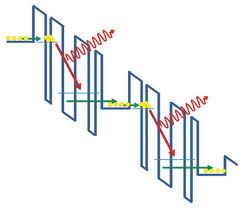Quantum Cascade Laser Applications

We are currently working on novel experimental techniques and reconstruction algorithms to produce high quality tomographic images using quantum cascade lasers (QCL) as a terahertz source. A custom algebraic reconstruction technique is being used that allows accurate tomographic reconstruction from non-refractive index matched samples. This allows a wider range of samples, particularly those of industrial, pharmaceutical, and medical interest to be studied. By using multicolour QCLs chemical maps of the samples can be obtained.
Work has also been conducted using a 2D bolometric array to detect the terahertz radiation produced by a QCL. By using a wide collimated beam to illuminate a sample it is possible to obtain real-time reflection or transmission mode images of the sample. This is useful when studying rapidly changing systems.
Implementation of Novel Sensing Paradigms
The field of terahertz remained largely within the domains of the laboratory environment as the technique matured with much fundamental work undertaken to improve generation and detection capability and also to understand results from the many different potential application areas as discussed above. However, in order to fully realise the potential of the technique in terms of real world applications novel setups are required to tailor the technique to a particular problem. In TAG we have been looking at how sensing technologies such as QCLs may be incorporated into robust online sensing paradigms within industry. Some examples of potential applications include real-time measurements of emulsion compositions, the study of polymer gels, and mapping of dynamic changes in moisture content in materials.
In addition we have also been looking at how to maximise the extraction of information from a terahertz pulse by using novel algorithms to help untangle the spectroscopic information recorded.
